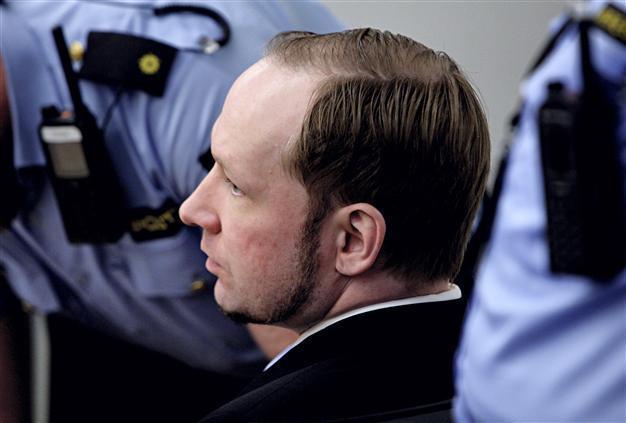'The water was red': survivors recall Norway massacre horror
OSLO - Agence France-Presse

Anders Behring Breivik listens in the courtroom in Oslo Wednesday morning May 16, 2012. AP photo
After seeing Anders Behring Breivik kill his friends and being hit by three bullets himself, one survivor of last year's Utoeya massacre told an Oslo court Monday how he swam out into water red with blood.
"There, I saw all the dead. The water was red" with blood, 20-year-old Hussein Kazemi said, describing the moment when he climbed back on land after throwing himself into the icy water to escape the mass killings on the small island of Utoeya.
Kazemi, who came to Norway from Afghanistan in March 2009, had thought he had found peace in the Scandinavian country. He had joined the ruling Labour Party's youth wing (AUF) because he hoped maintaining a left-leaning government in power in Norway would make it easier for him to obtain asylum.
But last July 22, it was the Labour Party and its youth group that were the targets of right-wing extremist Breivik's rage, as he first bombed a government building in Oslo, killing eight, before going on a shooting rampage for more than an hour at Utoeya where the AUF was hosting a summer camp.
On the small island, the confessed killer massacred another 69 people, most of them teens.
"For the first time in my life, I was afraid," Kazemi told the Oslo dsitrict court on the 21st day of Breivik's trial, describing how bullets bounced off a rock sticking out of the water behind which he had taken refuge.
Breivik, 33, has confessed to the killings but has refused to plead guilty, insisting his actions were "cruel but necessary" to stop the Labour Party's "multicultural experiment" and the "Muslim invasion" of Norway and Europe.
If the court finds him sane, Breivik will face Norway's maximum 21-year prison sentence, but that term can be extended for as long as he is considered a threat to society.
If he is found criminally insane however, he will be sent to a closed psychiatric care unit for treatment.
